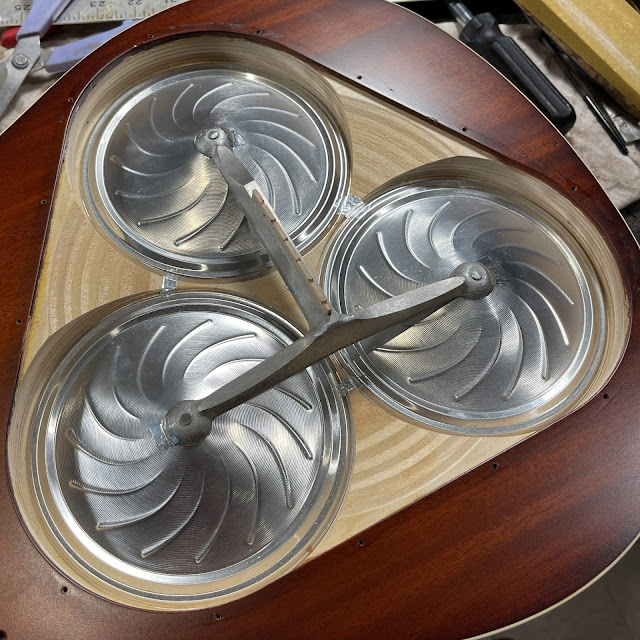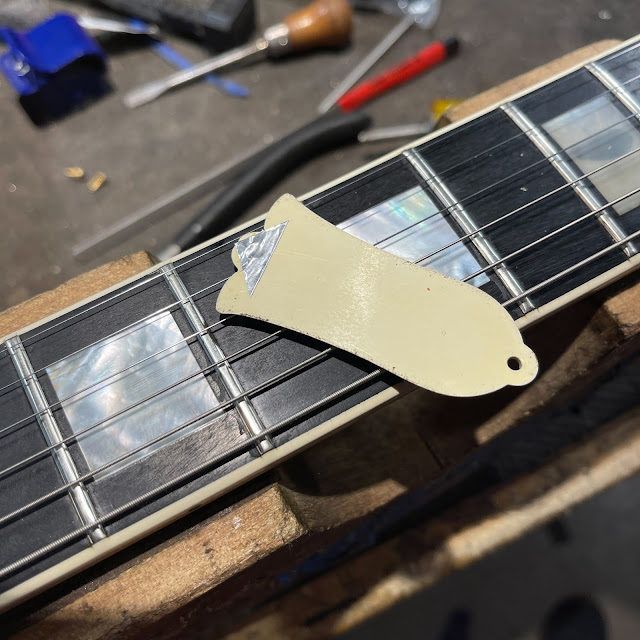Workshop: Tricone Bridge Placement, Truss Cover Tip, Zouk Bridges
I've been posting a lot of "quick workshop stuff" at my Instagram account and wanted to catch-up the blog to it. First-up here's a quick tour of the inside of a National tricone woodbody.
Nationals (and most resonator brands) seem to set their guitars from the factory for uncompensated (straight saddle) setup. I suppose this works best for slide players but it means out-of-tune calamity for fingerpickers and "normal" players. The average steel-string guitar bridge needs to have bang-on compensation on the treble side (so if the scale of the guitar is 25" then the high E's front edge of the saddle should be at 25") but 1/8" to-the-aft bass-side compensation to play in tune... roughly. That puts the leading edge of the low E at 25 1/8" instead.
Since the cones are all adjusted in the body and routed to fit the T-bridge in this guitar for 25" on either side, it means I need to finagle the seating of the bridge on the cones to get the bridge to move enough to have adequate compensation when it's properly setup.
To do that I first tack-down the cones in place with some aluminum foil tape so they won't move around...
As you can see, just a tiny bit of tape (pressed-down flush with a dull screwdriver or wood scrap) is enough to hold these from moving when tension is off the guitar.
Next I set the bridge. The top of these cones have a tiny hole in them and there's a pin in the bottom of the 3 bridge "feet" that locates into them to lock the bridge in place. To get the bass side to move 1/8" back (and thus roughly compensated) I use a small round file to expand the holes of the bass-side cones into slots. I can then reposition the bridge slightly aft of where it's at on the bass side.
I then use more small foil tape bits to secure the bridge from moving around.
Here you can see the maple saddle. It's uncompensated from the factory but I've used that same round file to knock the slot for the B-string and low E and A strings slightly back from the leading edge (by 1/32-1/16") so they intonate a little better.
Now that everything inside is also buttoned-up and "tacked-in-place," the guitar also sounds better, too.
Here's another trick with foil tape -- these Gibson "bell" truss covers tend to chip-out at the bottom edge. I've used a bit of foil tape to hold the broken part to the back of it. The stuff lays flat and holds-up well in this role. The screw will puncture the tape as soon as you put it back in so you don't need to drill it or have it spin around like plastic tape would.
Last, here are two new "copy" bouzouki bridges I made in the style of the original (top one) that split on one of its wings in transit. The original was black-painted maple and bone while the new ones are ebony and bone.







Comments